Longwave Broadcast System
EFR has been operating a central European longwave broadcast service since 1993 with three transmitter facilities, and transmits various data with this service. The reception area extends over a radius of approximately 500 kilometers around the transmitter locations in Mainflingen near Frankfurt am Main, Burg near Magdeburg, and Lakihegy near Budapest.

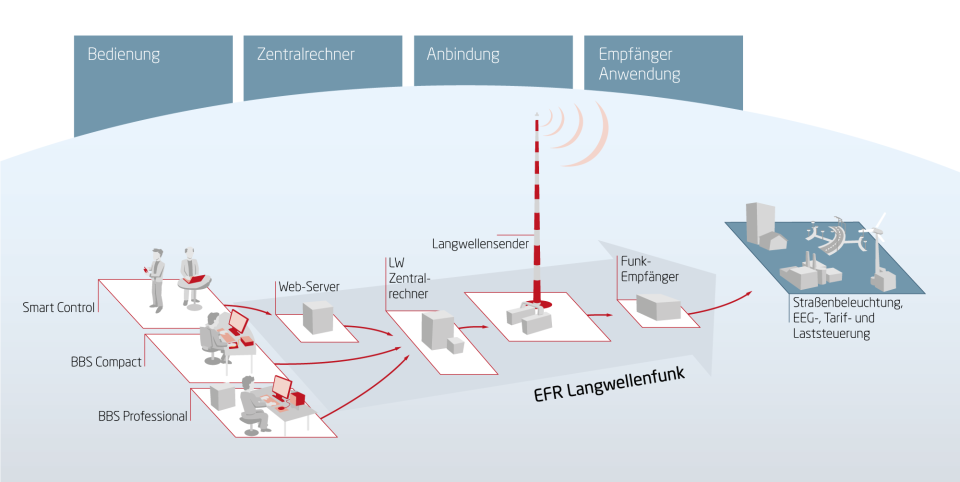
Longwave wireless remote control provides reliable control of renewable energy feed-in stations, heat pumps, heat storage facilities and public lighting systems and implements tariff and load management tasks. EFR transmits time synchronization signals for this purpose, which have been monitored by the PTB for compliance with legal time since 2017.
EFR offers this service as a system solution with control software for control center connection, wireless remote control receivers and services.
Hybrid operation with EFR’s GMS CLS management system is possible. This hybrid solution facilitates easy extension or upgrading of the controller with Smart Energy components.
With only three transmitters covering all of Germany and large parts of central Europe, and thanks to the durability of the components and their low power consumption, this control system is extremely energy efficient (low CO2 emissions) and sustainable compared to cellular or Internet-based systems.
Central computers
The central computers at the transmitter locations manage and forward the datagrams to the transmitters. They ensure that individual transmission requests are fulfilled.
The transmissions are repeated automatically. Date and time synchronization is performed in the breaks between participant transmissions (e.g. every 10 seconds).
Numerous precautions safeguard operation of the system even under adverse conditions. The central computers and transmitter facilities are implemented redundantly to ensure extremely high availability.
Lightning protection, a UPS, and a diesel generator ensure operation even in the event of a grid power outage.
Even if the signals from the transmitter do not appear, the receiver can retrieve individual basic schedules (timer clock function) stored in program memory.
ISO 27001 certification of the longwave system is in preparation.
User terminal software
The EFR workstation is the user terminal of the longwave broadcast system. It connects the customer to the EFR central computer and enables the customer to independently send datagrams for control and reconfiguration of individual receivers or receiver groups.
These systems are suitable for Redispatch 2.0 and cascade control.
The MSR client allows external hardware to be connected and integrated into existing control systems using the IEC 60870-5-104 protocol. On request, a monitor receiver can send back the wirelessly transmitted datagrams.
EFR’s various systems offer suitable solutions for companies of all sizes or with different numbers of receivers.
Individual control portal:
EFR Smart Control is the individual control portal for grid areas with up to 50 facilities. It enables, for example, direct four-level feed-in control or control of public lighting systems by means of an astronomical operating time calendar or installation of an additional infrastructure.
As an entry-level solution, the control features are limited to individual devices, so it is not suitable for Redispatch 2.0.
Compact EWS user terminal :
The EFR Compact EWS user terminal is designed for customers wishing to operate a complete ready-to use wireless remote control center.
The Compact user terminal allows small and medium-size grid operators to reduce the power of their feed-in stations if necessary. It supports the full functional scope of individual and group control.
The Compact user terminal is installed as software at the grid operator’ premises, with connection to the EFR central computer via EFR Connect (Single VPN). As a simple user terminal, it has a datagram database and a knob user interface for sending datagrams quickly.
The following three options are available for sending datagrams:
- Sending via buttons with stored datagrams
- Standard control element with active (On) and inactive (Off) states
- Renewable energy control element (four control levels: 100%, 60%, 30%, 0%) with display of remaining run time of reduction command
- Time- and date-driven transmission using a time list.
- Transmission via external floating hardware contacts (MSR client)
Datagrams are issued automatically via the integrated MSR Standard client with hardware connection.
Datagram transmission is monitored using a monitor receiver that compares the sent datagrams with the requested datagrams. This allows verification of whether requested datagrams have been sent or received. The user terminal also shows the system status of all components at all times.
Professional user terminal:
The Professional user terminal provides extended functionality and is designed as a multi-user system. It is redundantly connected to the longwave infrastructure through EFR Sat Connect.
The backup communications channel via satellites provides more stable, smoother and more secure access to the central computer. Comprehensive user administration allows different access rights to be assigned.
Datagram sending is based on a datagram database with a tree structure organized by category, from which stored datagrams can be sent.
Three options are available for sending datagrams:
- Direct manual triggering
- Time-based triggering
- Periodic sending
Users can also store datagrams for specific buttons and send them immediately at the press of a button.
The integrated MSR Standard client allows datagrams to be issued automatically. An MSR Street Lighting client specifically designed for street lighting can be also be connected to control the sending of datagrams using an astronomical portal and logical combinations the inputs.
An MSR IEC 60870-5-104 client supports direct integration of the Professional user terminal into the control system
A monitor receiver is available for monitoring datagram transmission. It compares sent datagrams with the database of the Professional user terminal. This allows verification of whether requested datagrams have been sent or received. The user terminal also shows the system status of all components at all times and has an extensive message database with logs of administration actions, all transmissions and other actions.
The Professional version can be customized with other add-ons.
MSR clients for Professional user terminal
MSR Client IEC
The MSR IEC client software enables transmission of wireless datagrams and monitoring of transmissions using the IEC 60870-5-104/101 protocol.
Commands are transmitted with TK49 (setpoint value) or TK45/46 (datagram selection using IOA).
The client enables transmission of On/Off signals, control of renewable energy feed-in devices (which can be organized in configurable data models), and control of temperature-dependent heat storage facilities. These MSR clients can be customized for special tasks.
MSR Street Lighting client
Light sensors distributed over the control area are connected to the inputs of the client. If one of these light sensors indicates that the lighting should be switched on or off in a specific area, this request is transferred by the EFR user terminal to the EFR central computer and transmitted within a few seconds.
As an alternative to individual area control of the areas, distributed sensors can be connected together across the whole town area, and a transmission only initiated if there is a signal from several light sensors.
This compensates for potential defective sensors and achieves consistent lighting over the entire area. If disturbances to the sensor messages occur during the nighttime, switching takes place based on the integrated astronomical time window.
The devices can be addressed individually or in groups, for example for special lighting such as Christmas markets or property lighting.
Wireless remote control receivers and components
There are different types of receivers for different application areas, which differ in terms of design and number of controllable relays:
- Tall format for mast mounting, suitable for lighting control
- Receivers for three-point mounting on the meter bracket, suitable for tariff control
- Piggy-back mounting on the meter clamp bracket for tariff control
- Top-hat rail mounting with compact design
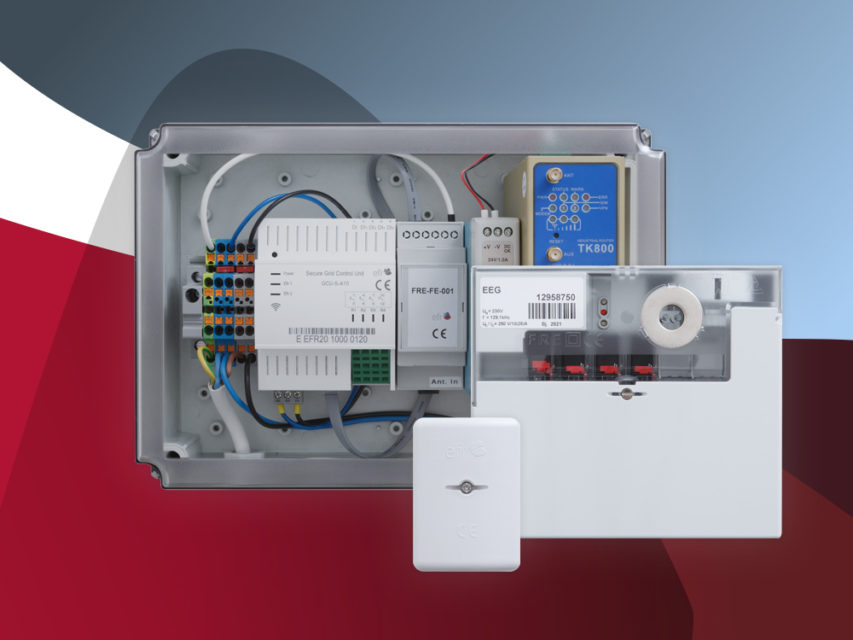
EFR offers suitable wireless remote control receivers (FREs) and components for various application areas:
- FREs with smart synchronized timers to run switching programs and for direct control
- Two protocols available: Versacom and Semagyr, with up to six plug-in relays
- Programming via optical interface
- Transient and direct switching commands (response time approx. 10 s)
- Holiday management, astronomical operating time calendar (for street lighting)
- Integrated antenna or remote antenna with its own interface
The FSK active antenna receives the FSK-modulated signals from the respective EFR transmitter and outputs the demodulated signals using an open-collector driver. The remote receiver unit for EFR signals has been adapted for connection to wireless remote control receivers from a variety of manufacturers and is available as a single-frequency receiver for carrier frequencies of 129.1 kHz, 135.6 kHz or 139 kHz. This antenna has a selective input filter for improved noise immunity.
Commissioning test
The EEG Check was developed to make the installation of a radio ripple control receiver for feed-in management or other applications easier and reliable.
With the help of a test device, the electrician can ensure adequate reception conditions and the complete chain of effects of the feed-in management, including adjustment and recording of the inverter control.
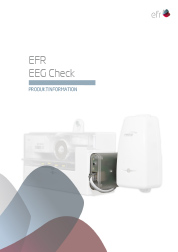
Order of a test converter EEG-Check for the supply area of Bayernwerk Netz GmbH
Please download the EEG-Check test converter order form and send it to kontakt(at)efr.de or fax it to +49 (0)36921 3080-199.
We are also available for questions on +49 (0) 36921 3080.
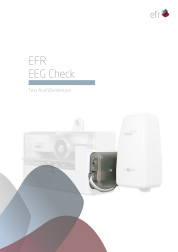
EFR EEG-Check filling instructions Bayernwerk
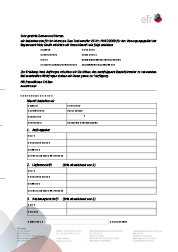
Order form (BAG customers)
If you would like to know more about EEG Check and the associated online portal, please contact us.
